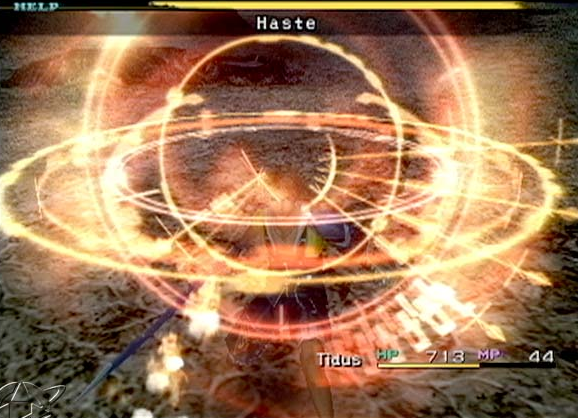Workouts
What Tempo Should I Lift At? (And Why?)
Discuss this post in RPGFitGroup!

Tempo? What?
So! Here’s something we’ve NEVER talked about on the blog before – tempo! Specifically, tempo when performing resistance training! This frequently refers to lifting free weights, but it can also refer to bodyweight strength exercises like pull ups and push ups. Tempo is, quite descriptively, the speed and rhythm at which you perform a given exercise. Exercise temp is referred to in a three-digit notation, which can look like any of the following…
- 4/2/1
- 4-2-1
Or even just…
- 421
Personally, I prefer the 4/2/1 style. Basically, each number signifies a “count,” usually a bit less than a second. The exact timing of the count is less important than making sure that the rhythm stays constant for each number. The numbers themselves represent different phases of an exercise.
The first number (in our example, 4,) is the eccentric portion of an exercise. This is where you are “loading” the weight, setting up to do the main movement of the exercise itself. For a squat, for instance, the eccentric movement is when you bend your knees and lower yourself down – the beginning of the exercise. This can get a little tricky for some exercises, though. For instance, for a pull up, the eccentric portion is actually what you usually do last, that is, lower yourself back down after you’ve pulled yourself up. Same goes for a deadlift, the eccentric portion is where you’re lowering the barbell back to the ground. Nevertheless, even in these cases the first number still refers to that portion of the movement, even if you technically perform is “last.” So, in our example, if you’re performing a squat at a 4/2/1 tempo, you would lower yourself down with a count of 4.
The second number (in our example, 2) is the isometric portion of an exercise. This is the “hold” section of the movement. In a squat or a push up, it’s when you’re holding your weight at the bottom of the movement, with either your legs or arms in a stationary bend. For a pull up or deadlift, as another example, the isometric portion is where you’re holding the weight (either the barbell or your own body weight) at the top of the lift. In our example here, we would hold that position for a count of “2.” Remember, this needs to be at the same rhythm/pace as our four count during the eccentric phase!
The final number (in our example, 1) is the concentric portion of an exercise. This is typically what you think of when you think of performing an exercise. In squats, it’s standing up. Pull ups, it’s the act of pulling yourself up. Deadlifts, it’s the act of raising the bar off the floor. In our example, you’d be performing that action for a count of “1.”
Why?
I’ll go into a bit more detail for three different common lifting tempos, but tempo has to do with two major body muscular functions, time under tension, and power generation. Basically, by slowing down your tempo, you put your muscle fibers under tension for a longer period of time. This is great for muscular endurance (being able to move a weight for a long time/high number of reps,) and hypertrophy (muscle size generation,) not not as great for raw strength (ability to lift a heavy weight) or power (ability to lift a heavy weight quickly.) Conversely, by shortening your time under tension by moving more quickly, but also moving more weight, you’re going to build more strength, but not as much endurance or mass. Now, with that said, here’s three basic tempos to try in your next workout.
(Note: Tempos can be kind of controversial and/or debated within the fitness community. Everyone agrees tempo matters, but not everyone agrees with what the right tempo is, and in fact the proper tempo may vary depending upon where a person is at in their regimen, and what their body is conditioned for already.)
4/2/1 – For Endurance and Size
This is a great tempo for building muscular endurance and muscular hypertrophy. For hypertrophy in particular, you want to really focus on the muscles you’re trying to enhance when performing both the eccentric and concentric phases. The eccentric four count gives you a lot of time to focus on isolating that muscle or muscle group. During the isometric phase, you can really focus on engaging those muscles as well, before exploding back into the concentric phase with a short “1” count.
2/0/2 – For Strength
The 2/0/2 tempo is a more even pace, designed to engage your muscles equally in both the eccentric and concentric phases. Because you’re not in the eccentric phase for so long, you typically have more “gas” to pour into your concentric phase, so you can focus on moving more weight. You’re also not concerned with an isometric hold sapping your strength either, since you’re not focused on contracting certain muscles in particular for hypertrophy, or taxing your overall system for muscular endurance.
X/X/X – For Power
The X/X/X tempo is strictly a movement for generating raw power. X/X/X just means perform every phase of the exercise as quickly as you can while still remaining in complete control of the weight. Even when moving as quickly as you are able, you really don’t want to risk injury by losing control of the exercise. Also make sure that even though you’re performing the eccentric portion quickly, you still move smoothly and practice good form.
That’s it for our (probably first) discussion on resistance tempos. Please note, this is really just a primer, you can go a lot deeper on this subject, and we may in the future. At the same time, try not to over think it too much. Tempo is good to think about, yes, but let’s face it, if you’re squatting 400 pounds with good form, you’re going to build strength, mass, endurance, and power, regardless of how fussy you get about tempo.
If you have any further questions or want to discuss this further, I heartily recommend you join us over in RPGFitGroup on Facebook!
Live boldly, change the world, and continue to be awesome!
Dan “DaRatmastah” Wallace




